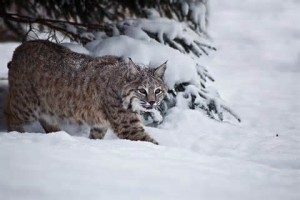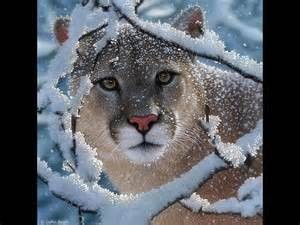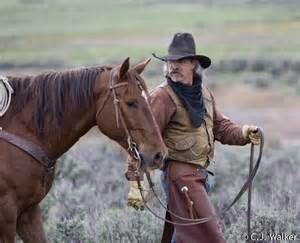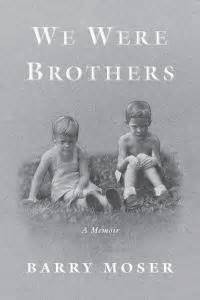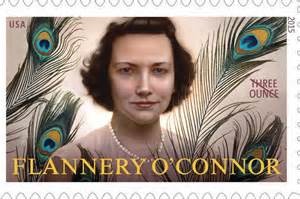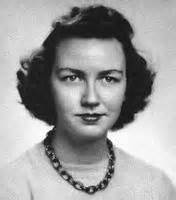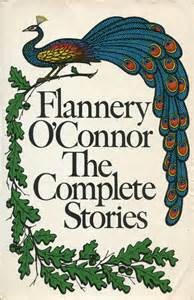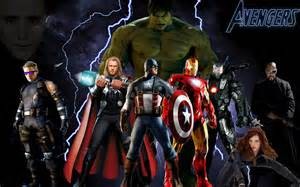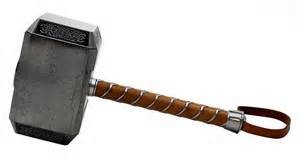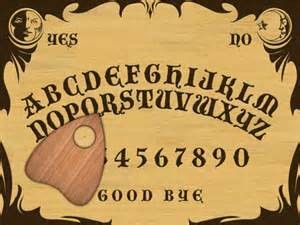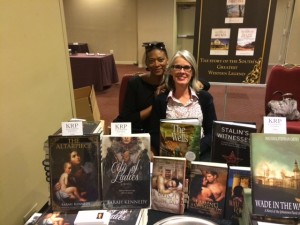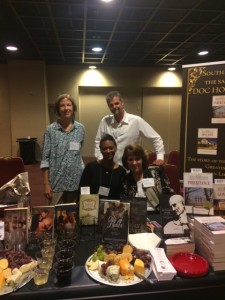By Dana Schultz
“Telling me a piece should make me ‘feel strange, like living in the late twentieth century’ doesn’t do a lot for me, mainly because the twentieth century didn’t make me feel strange.” – Jon Hansen, “I Want My 20th Century Schizoid Art,” Feeling Very Strange.
A common goal of anthropologists is to “make the strange familiar and the familiar strange.” The authors we admire most also achieve this goal. An effective author not only makes the unique circumstances of their story seem personal for their audience (a.k.a. familiar), the author then turns the audience’s assumptions to distance the reader into discomfort and/or awe (making the familiar strange). Likewise the best short story authors, and arguably best novelists as well, cause readers to infer details that cannot fit in the narrative. By allowing readers to imagine beyond what is given, the stories themselves become substantially more interactive and personal to the reader. It may come as no surprise that one of my favorite short story anthologies is called Feeling Very Strange, and that many of the stories contained in that anthology manage to make situations appear at once ordinary and extraordinary.
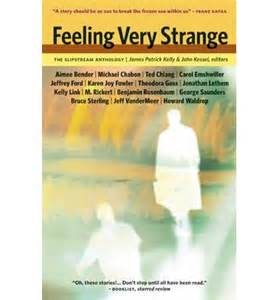 Last January, when my creative writing Professor first assigned Feeling Very Strange: The Slipstream Anthology, slipstream quickly joined the works of Oliver Sacks and world geography on my list of topics that I adore but understand little about. Over the years atlases and Oliver Sacks’ Anthropologist on Mars have given me an array of stories and facts, but that doesn’t mean I can contribute diagnoses to Lisa Sander’s column or even find my way out of a grocery store using orienteering. As you can tell, there’s a noticeable gap between my abstract and practical knowledge.
Last January, when my creative writing Professor first assigned Feeling Very Strange: The Slipstream Anthology, slipstream quickly joined the works of Oliver Sacks and world geography on my list of topics that I adore but understand little about. Over the years atlases and Oliver Sacks’ Anthropologist on Mars have given me an array of stories and facts, but that doesn’t mean I can contribute diagnoses to Lisa Sander’s column or even find my way out of a grocery store using orienteering. As you can tell, there’s a noticeable gap between my abstract and practical knowledge.
From the hazy, noncommittal editor’s note on slipstream’s definition to the diverse and soaring stories, Feeling Very Strange caused the old familiar excitement to grab hold of me: the thrill that I was about to get into something way over my head. And once again that abstract-to-practical-knowledge gap appeared: I’m excited to talk about slipstream and lack the concrete terms to talk about it with.
But hey, I’m not alone! No one, not even Feeling Very Strange’s editors, James Patrick Kelly and John Kessel, feel comfortable giving slipstream a definition. Feeling Very Strange’s editor’s note is titled “Slipstream: The Genre That Isn’t.” The ambivalence is framed as respectful to the anthology’s contributors, “For most of our contributors these stories are just stories. If they feel pressed to give them a label they may use ‘metafiction’ or ‘magic realism’ or ‘fabulation’… Definition does not matter to many of them, and that is a warning to us not to put too much faith in definitions (pg xi).” When you find that the slipstream’s explanation is not helpful even in the editor’s note, you know you have a problem. The editors claim slipstream is a feeling not a genre, similar to how horror can be felt in many genres. The feeling slipstream gives is cognitive dissonance, a sort of psychological discomfort the editors and Bruce Sterling agree are especially relevant for the 20th and 21st century. As a quick explanation, cognitive dissonance is when your mind can’t figure out which way is up or down, so you just pick a way and pretend the confusion does not exist. Psychologists claim that humans need to have consistency, so when ideas flip our expecations we do our best to reason it out or ignore the conflict.
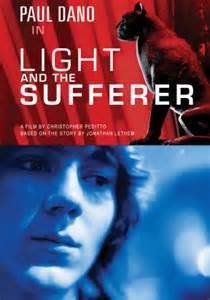 Jonathan Lethem’s Light and the Sufferer belongs to the anthology Feeling Very Strange, and is a gold standard for snappy and discomforting short fiction. The story begins as an urban drama, all signs pointing to urban stereotypes and narrative realism. Then about ten pages in, aliens called Sufferers appear. Tension builds as readers reel, is this an apocalypse story? Will there be an intergalactic battle? But no, the Sufferer ultimately plays an ambivalent role: at once active and inactive, essential and inconsequential to the story. The Sufferer does not communicate with the characters, so characters interpret the Sufferer’s purpose based on experience. The Sufferer is a vigilante. A villain. A crack addict. Ultimately, it is the ambivalence of the Sufferer that makes the story compelling. How is that possible? Because the reader must interpret, which in turn makes the story personal.
Jonathan Lethem’s Light and the Sufferer belongs to the anthology Feeling Very Strange, and is a gold standard for snappy and discomforting short fiction. The story begins as an urban drama, all signs pointing to urban stereotypes and narrative realism. Then about ten pages in, aliens called Sufferers appear. Tension builds as readers reel, is this an apocalypse story? Will there be an intergalactic battle? But no, the Sufferer ultimately plays an ambivalent role: at once active and inactive, essential and inconsequential to the story. The Sufferer does not communicate with the characters, so characters interpret the Sufferer’s purpose based on experience. The Sufferer is a vigilante. A villain. A crack addict. Ultimately, it is the ambivalence of the Sufferer that makes the story compelling. How is that possible? Because the reader must interpret, which in turn makes the story personal.
In essence Lethem drives readers to ask themselves difficult fundamental questions (How do you conceptualize real people in relation to yourself? How do you answer a question that you can never know the definitive answer to?) through a supernatural metaphor (How do you conceptualize the Sufferer? How do you come to terms with your answer when you can never really know what the Sufferer is about?). But is the strategy that Lethem uses, blending realism with the supernatural, altogether new? Or even new in the slightest? In his Electric Literature blog article “Oh Slippery Slipstream: Who Is the Weirdest Genre of Them All?” Ryan Britt points out, “I hear that the first super-popular book in the western world features dudes who can turn into burning bushes. Historically, ‘weirdness’ has always been hip.”
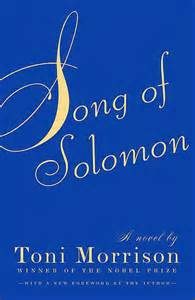 In Toni Morrison’s Song of Solomon characters experience visions, see ghosts, and create potions all in a 20th century world. Morrison doesn’t jump over into Harry Potter and make clear that magic exists. Rather, there is a sense of superstition that crosses over into the supernatural and then, like taking a double take and realizing the cyclops vanished, crosses back again. The reader does indeed experience cognitive dissonance, the ingredient Kessel and Kelly propose as the key literary effect of slipstream. A quick explanation, psychologists claim that humans need to have consistency, so when ideas upset our world concept we do our best to reason it out or ignore the conflict. Cognitive dissonance is when your expectations are inverted, and you’re mind needs to either push the conflict into the subconscious or come to a new synthesis to remove the dissonance. Was that vision Hagar talks to an actual ghost? Morrison doesn’t say. Without the author’s guidance, the reader is free to interpret to form their own synthesis. Morrison flat out overturns the reader’s expectations when she describes an utterly impossible scene after a hundred pages of more-or-less realism. Nailing our false sense of security into the coffin, the speaker emphasizes that the scene is not a dream. Here’s what happens: the protagonist witnesses his mother getting smothered alive by garden flowers. The flowers are literally attacking her, growing larger by the second and bending over her while she laughs at bats them back. The protagonist watches dumbstruck, and when he recounts the incident to a friend he claims it was a dream. But it wasn’t. Morrison made a clear effort to say so. And still the reader finds himself wanting to side with the dream thing. After all, what about those one hundred previous pages of realism? Morrison’s Song of Solomon contributed to Bruce Sterling’s coinage of slipstream in 1989: it’s literature that breaks the narrative realism barrier.
In Toni Morrison’s Song of Solomon characters experience visions, see ghosts, and create potions all in a 20th century world. Morrison doesn’t jump over into Harry Potter and make clear that magic exists. Rather, there is a sense of superstition that crosses over into the supernatural and then, like taking a double take and realizing the cyclops vanished, crosses back again. The reader does indeed experience cognitive dissonance, the ingredient Kessel and Kelly propose as the key literary effect of slipstream. A quick explanation, psychologists claim that humans need to have consistency, so when ideas upset our world concept we do our best to reason it out or ignore the conflict. Cognitive dissonance is when your expectations are inverted, and you’re mind needs to either push the conflict into the subconscious or come to a new synthesis to remove the dissonance. Was that vision Hagar talks to an actual ghost? Morrison doesn’t say. Without the author’s guidance, the reader is free to interpret to form their own synthesis. Morrison flat out overturns the reader’s expectations when she describes an utterly impossible scene after a hundred pages of more-or-less realism. Nailing our false sense of security into the coffin, the speaker emphasizes that the scene is not a dream. Here’s what happens: the protagonist witnesses his mother getting smothered alive by garden flowers. The flowers are literally attacking her, growing larger by the second and bending over her while she laughs at bats them back. The protagonist watches dumbstruck, and when he recounts the incident to a friend he claims it was a dream. But it wasn’t. Morrison made a clear effort to say so. And still the reader finds himself wanting to side with the dream thing. After all, what about those one hundred previous pages of realism? Morrison’s Song of Solomon contributed to Bruce Sterling’s coinage of slipstream in 1989: it’s literature that breaks the narrative realism barrier.
But who ever said literature needs to be narrative realism? Why then are Lord of the Rings and Watership Down on the classics shelf? Literature to me is writing that informs culture- writing that says something new through symbolism and character growth. Morrison’s Song of Solomon achieved that, and it did not need the label “slipstream” to do so. And honestly, I doubt that authors in the slipstream anthology need the label either. I checked the websites of two of my favorite writers, Kelly Link and Aimee Bender, both anthologized in Feeling Very Strange. On the “About the Author” page, a mention of slipstream was nowhere to be found. But I do have to say thank goodness Kelly and Kessel provided this anthology to put Kelly Link, Aimee Bender, and so many other talented and daring writers together. If slipstream achieved one thing it placed writers of a “common sentiment” together. In this light, we make progress by thinking of slipstream’s description more in terms of a thesaurus than a dictionary. Instead of a solid definition for slipstream, in the anthology you get a list of authors (the “similes” of this metaphor) to learn about in relation to each other. Look up Kelly Link in this hypothetical thesaurus, and you’ll get George Saunders, M. Rickert, and Michael Chabon to expand your reading arsenal with. Writers of a “common sentiment,” yet far from interchangeable. Thesauruses, after all, provide approximations of words, and those approximations are not always a close match. “Hands on” and “everyday” appear to both be similes for “practical,” but each applies only in certain contexts.
At first the idea of slipstream fascinated me. The noncommittal, barely tacit agreement purported by Kelly and Kessel that slipstream’s definition is supposed to be confusing made slipstream somehow attractive to me, as if being interested in it made me smart. But then I read Ryan Britt’s article, and I came to my senses. I still haven’t wrapped my head around the definition of slipstream. What’s so great about something unexplained? Wouldn’t it be better to forget definitions and just appreciate a good story for what it is, a good story? Ryan Britt suggests that slipstream might just be a marketing tool, a way to justify “slipping” more genre elements into the mainstream. And as for cognitive dissonance? Perhaps calling it slipstream is more of a way to solve a critic’s cognitive dissonance of what writing style they can call “good” or “bad”. Because the stories in Feeling Very Strange are good.
So it’s an even playing field, everyone’s confused about slipstream and has been confused ever since Bruce Sterling coined the term in 1989. Slipstream’s influence on writing is forming but not yet defined. We will explore this issue further in my next blog which will appear in a couple of weeks.
To be continued.
Sources
http://www.wsj.com/articles/slipstream-fiction-goes-mainstream-1423072888
Feeling Very Strange: The Slipstream Anthology. Ed. James Patrick Kelly and John Kessel (2006)
Song of Solomon by Toni Morrison (1977)
posted by R. T. Smith



